Scientific classification
| Kingdom: | Plantae |
| Clade: | Tracheophytes |
| (unranked): | Gymnosperms |
| Division: | Pinophyta |
| Class: | Pinopsida |
| Order: | Pinales |
| Family: | Pinaceae |
| Genus: | Picea |
| Species: | P. abies |
Characteristics
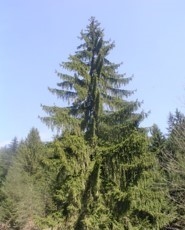
Picea abies is an evergreen tree from the Pinaceae family. The tree is erect, properly branched, conical canopy, growing up to 55 meters in height. The branches are vertebrate, drooping, horizontal or slightly raised, the young branches are light to reddish brown and bare.
The crown is narrow, pyramidal, properly branched and with a pointed tip. The trunk diameter is up to 1 meter. The bark is thin, smooth in youth, gray and small-scaly, dark red in old age and peels in round scales. The buds are dark orange in color, not resinous, the apical buds are blunt, conical to pointed ovate, slightly larger than the lateral buds which are light to dark brown and mostly pointed. The needles around the twigs are evenly spirally distributed, pointed, flat, four-edged, stiff, slightly bent, 10-25 mm long, about 1 mm wide, have a short stalk, remain on the tree for 5-7 years and after falling leave a rough twig .
The flowers are monocious (male and female flowers are located on the same tree), blooming from April to June. The seeds are ovoid and dark brown, about 4 mm long, with a wing about 13 mm long.
It is a very variable species, and many forms and cultivars have been described, which mainly differ in the form of growth, by needles and cones.
Habitat – Range
It is widespread in northern Europe, and in the hilly and mountainous areas of Central and Southern Europe. Propagated by seeds and vegetatively by cuttings in late summer. Fresh, light, humus and acidic soil suits it. It tolerates shade, cold temperatures and drought well, it can be pruned. Due to its shallow root, it is not good to plant it in places that are not protected from strong gusts of wind. It acidifies the soil because the needles are difficult to decompose. Within the forest they bloom after 30-50 years.
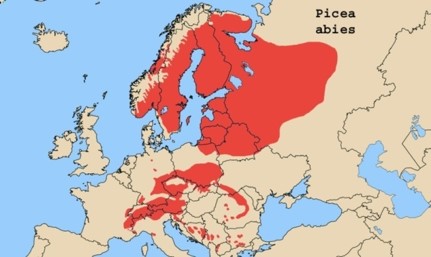
Bark and Cones
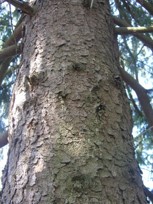
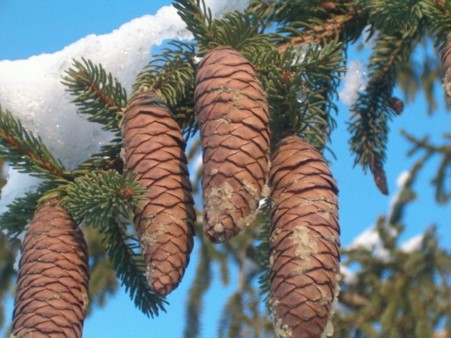
Etymology
The name of the genus Picea comes from the Latin word pix (resin), due to resinous secretions. In foreign languages, the names are Norway spruce (English), Gemeine Fichte, Gewöhnliche Fichte, Rotfichte, Rottanne (German), épicéa commun, épinette de Norvège (French), peccio, abete rosso (Italian), common spruce (Serbian).
Honey
On young shoots in April and May, plant lice secrete honeydew, which attracts bees. Such bee honey is dark in color, thick and crystallizes quickly. It is highly valued because it contains many minerals.
Needless
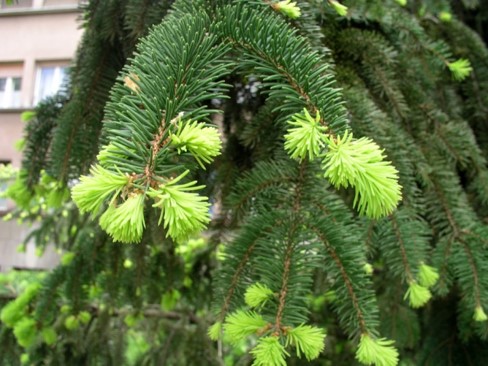
Usage
It is planted for the needs of the wood industry, but also as an ornamental tree in yards and parks.
Young needles are rich in vitamin C (250-300 mg%), they can be consumed as a healthy spring snack, used to make tea or make syrup. The resin can be chewed like chewing gum. Edible and inner part of the crust (cambium) that can be dried and ground and used as an addition to flour.
Spruce wood is used for making furniture and string instruments, it is of high quality due to its beautiful rings and a high degree of smoothness in processing. It is considered to be of the highest quality wood in the production of hives.



